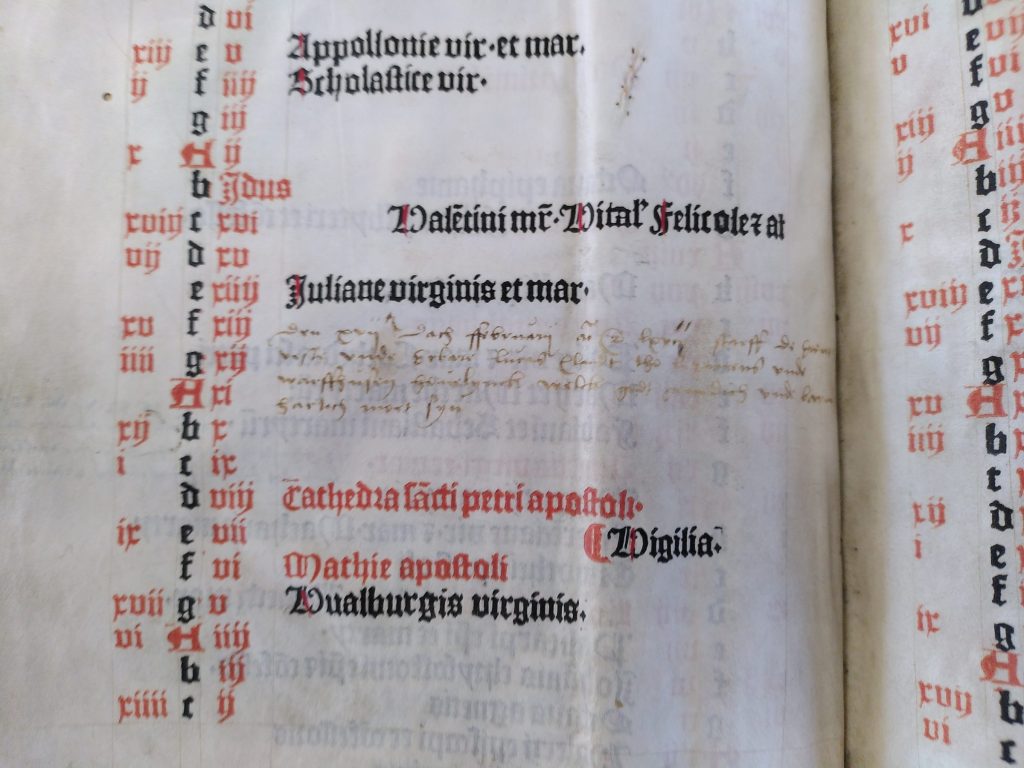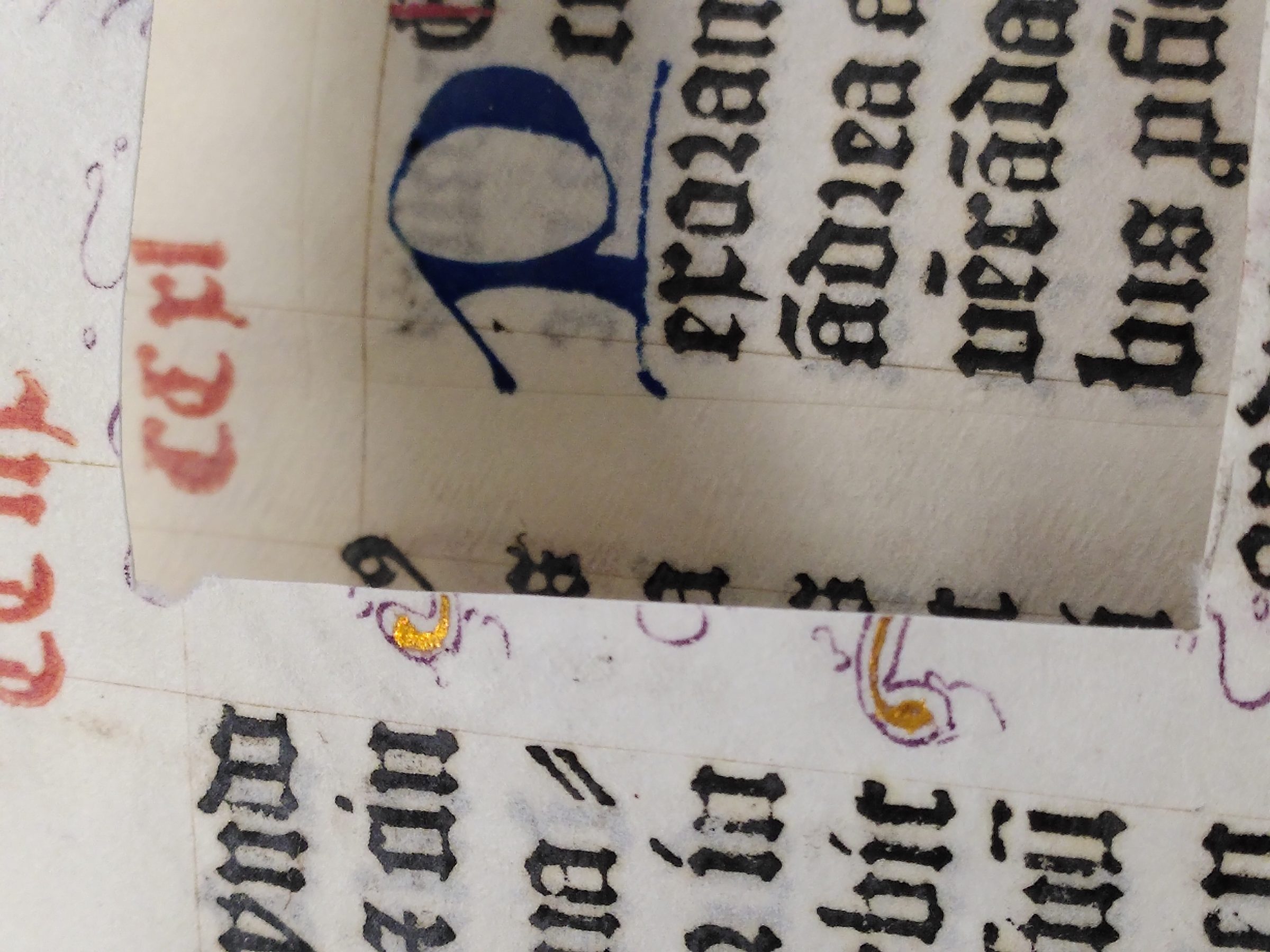Between 1558 and 1590, a large parchment missalcould be seen lying on the Maria altar in the Donatuskerk here in Leermens. The priest used this book on a daily basis during mass to look up the right prayers. The missal was used extensively, as we can see from the notes in the calendar. The parchment has become soft and shiny in some places from the many times fingers touched the pages to turn them.
This missal was printed in Cologne in 1489 and was intended for use in the diocese of Münster. It must have been expensive, as it was printed on parchment, which was more expensive than paper, but sturdier, too. That is the reason why this book is still almost completely intact today. The missal may have ended up in the Donatuskerk because of trade relations between Cologne and Groningen. In the Donatuskerk, it was part of the religious community: important information, such as dates of deaths, was written down in the annual calendar. On these dates, the community prayed for the deceased, to help them on their way to heaven. This makes this missal unique to the area of Leermens. A quick view of its calendar tells us a lot about the community.

The Clant family, for example, is named several times in the missal, and they may have had their own altar in the church. It is possible that the missal was kept in their house, the Bolsiersemaheerd, for a while. In any case, the missal witnessed a crime at the end of the 16th century: Willem Ubbena forged the date of death of his father-in-law in the missal, maybe to get out of his inherited debts. His act was detected and a couple of years later, Willem Ubbena was convicted for forgery. It is not clear whether William’s father, Joachim Ubbena, who was mayor of the city of Groningen, was still alive at the time. If so, he would not have been happy with his son’s antics.

After this, we lose sight of the missal for a while. We do know that it was vandalized at some point: someone cut out the initialsthat were illuminated with gold leaf. Maybe they were used to decorate another book? We do not know this for sure, but this was common practice in the Middle Ages. These cut and pasted parts are known as membra disiecta.Another example of this is this book of tides from the University Library of Radboud University, which has initials pasted into it.

Our parchment missal has been well preserved thanks to its sturdy material. In the 19th century, it ended up with R.K. Driessen, an archivist in Groningen, who did research into the history of the book. He suspected that the book had been used in the Akerk in the city of Groningen, but he was wrong: the city of Groningen did not use the missal of Münster, but the missal of Utrecht. We now know that the missal was used in the Donatuskerk in Leermens.
After R.K. Driessen’s death in 1832, the book was sold at auction, which is how the University of Groningen Library acquired it. Today, the missal is safely preserved in its Special Collections. Every now and then, it is on public view. In 2001, for example, it was part of the Hell and Heaven exhibition in the Groningen Museum, which focused on daily life in the Middle Ages. In 2022, it was on display in the Fries Museum at Leeuwarden as part of an exhibition about medieval Frisia.
Author: Kjelda Glimmerveen







